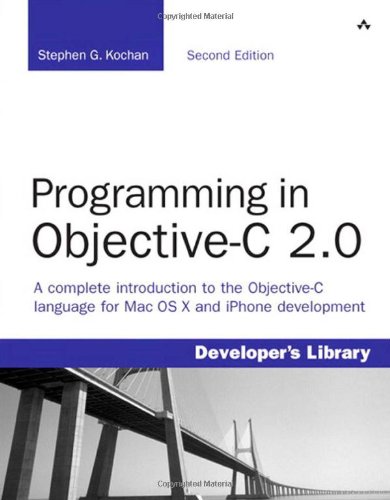

Most ebook files are in PDF format, so you can easily read them using various software such as Foxit Reader or directly on the Google Chrome browser.
Some ebook files are released by publishers in other formats such as .awz, .mobi, .epub, .fb2, etc. You may need to install specific software to read these formats on mobile/PC, such as Calibre.
Please read the tutorial at this link. https://ebooknice.com/page/post?id=faq
We offer FREE conversion to the popular formats you request; however, this may take some time. Therefore, right after payment, please email us, and we will try to provide the service as quickly as possible.
For some exceptional file formats or broken links (if any), please refrain from opening any disputes. Instead, email us first, and we will try to assist within a maximum of 6 hours.
EbookNice Team

Status:
Available4.8
39 reviewsTHE #1 BEST SELLING BOOK ON OBJECTIVE-C 2.0!
From the author of Programming in C, Programming in Objective-C 2.0 provides the new programmer a complete, step-by-step introduction to the Objective-C language. The book does not assume previous experience with either C or object-oriented programming languages, and it includes many detailed, practical examples of how to put Objective-C to use in your everyday programming needs.
Objective-C has become the standard programming language for application development on the Mac OS X and iPhone platforms. A powerful yet simple object-oriented programming language that’s based on the C programming language, Objective-C is widely available not only on OS X but across many operating systems that support the gcc compiler, including Linux, Unix, and Windows systems.
The second edition of this book has been updated and expanded to cover Objective-C 2.0. It shows not only how to take advantage of the Foundation framework’s rich built-in library of classes but also how to use the iPhone SDK to develop programs designed specifically for the iPhone and iPod Touch.
Table of Contents
1 Introduction
Part I: The Objective-C 2.0 Language
2 Programming in Objective-C
3 Classes, Objects, and Methods
4 Data Types and Expressions
5 Program Looping
6 Making Decisions
7 More on Classes
8 Inheritance
9 Polymorphism, Dynamic Typing, and Dynamic Binding
10 More on Variables and Data Types
11 Categories and Protocols
12 The Preprocessor
13 Underlying C Language Features
Part II: The Foundation Framework
14 Introduction to the Foundation Framework
15 Numbers, Strings, and Collections
16 Working with Files
17 Memory Management
18 Copying Objects
19 Archiving
Part III: Cocoa and the iPhone SDK
20 Introduction to Cocoa
21 Writing iPhone Applications
Part IV: Appendixes
A Glossary
B Objective-C 2.0 Language Summary
C Address Book Source Code
D Resources